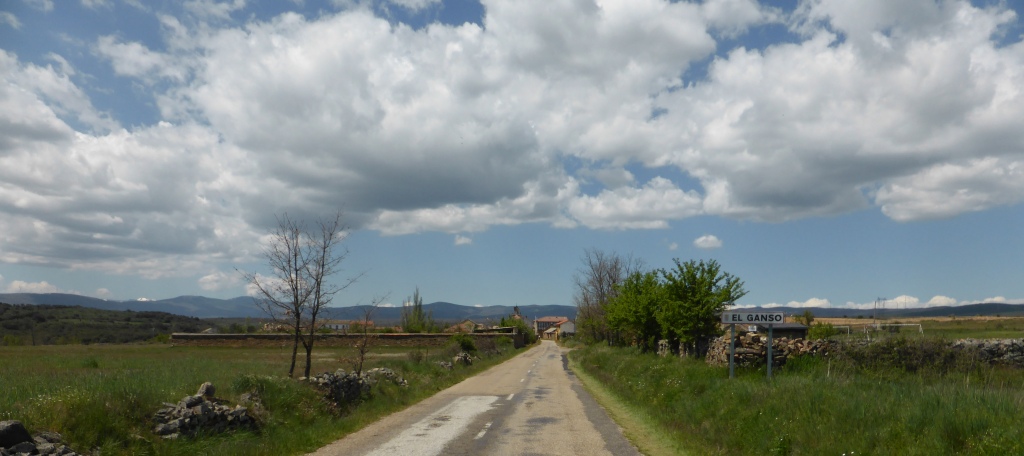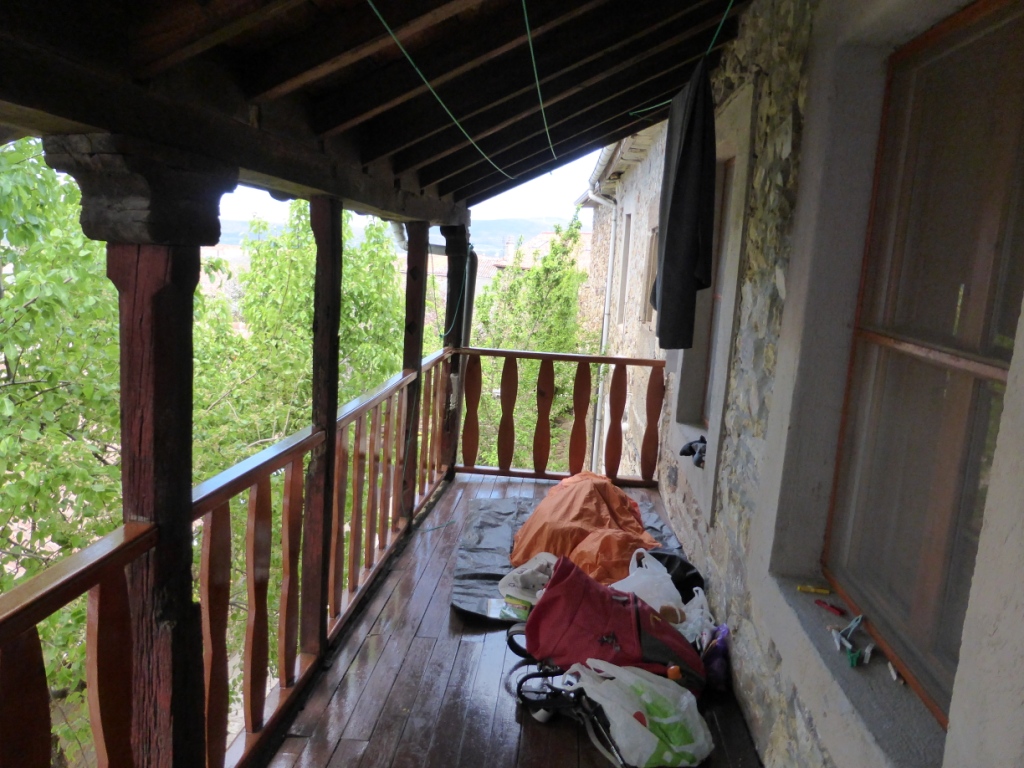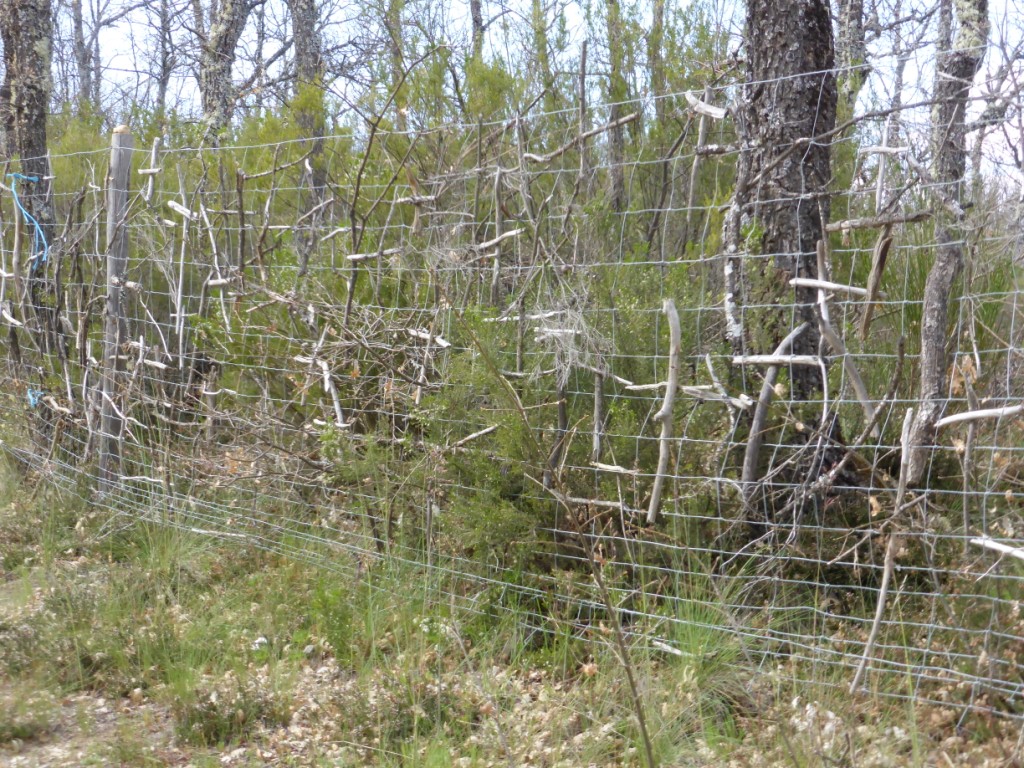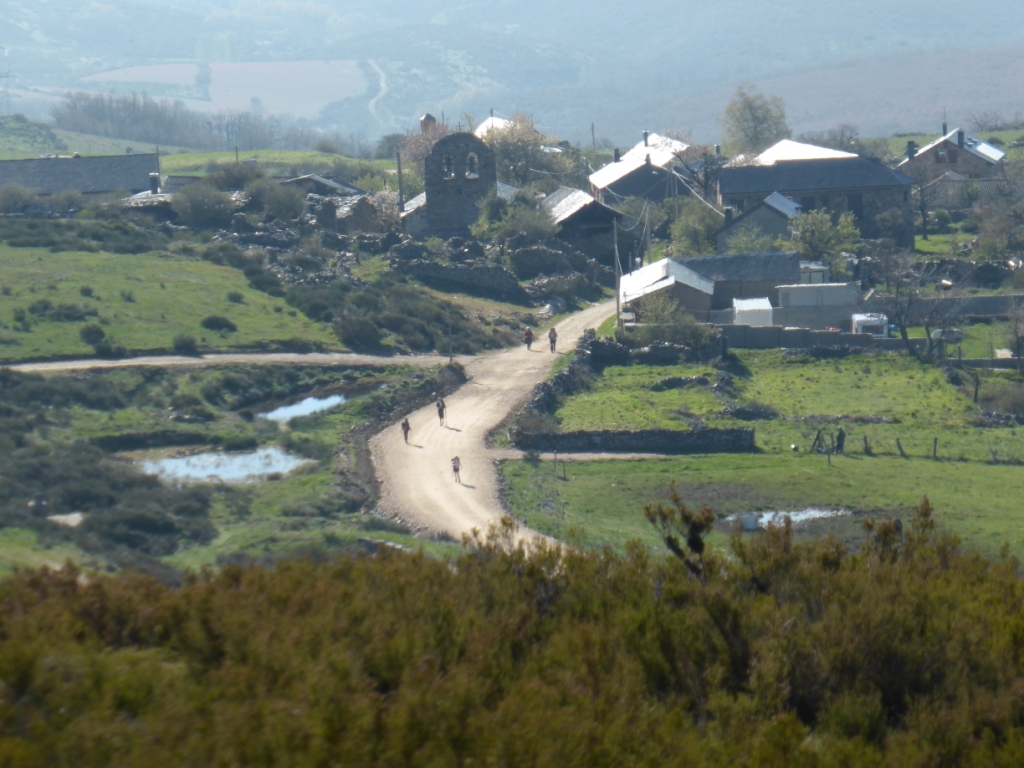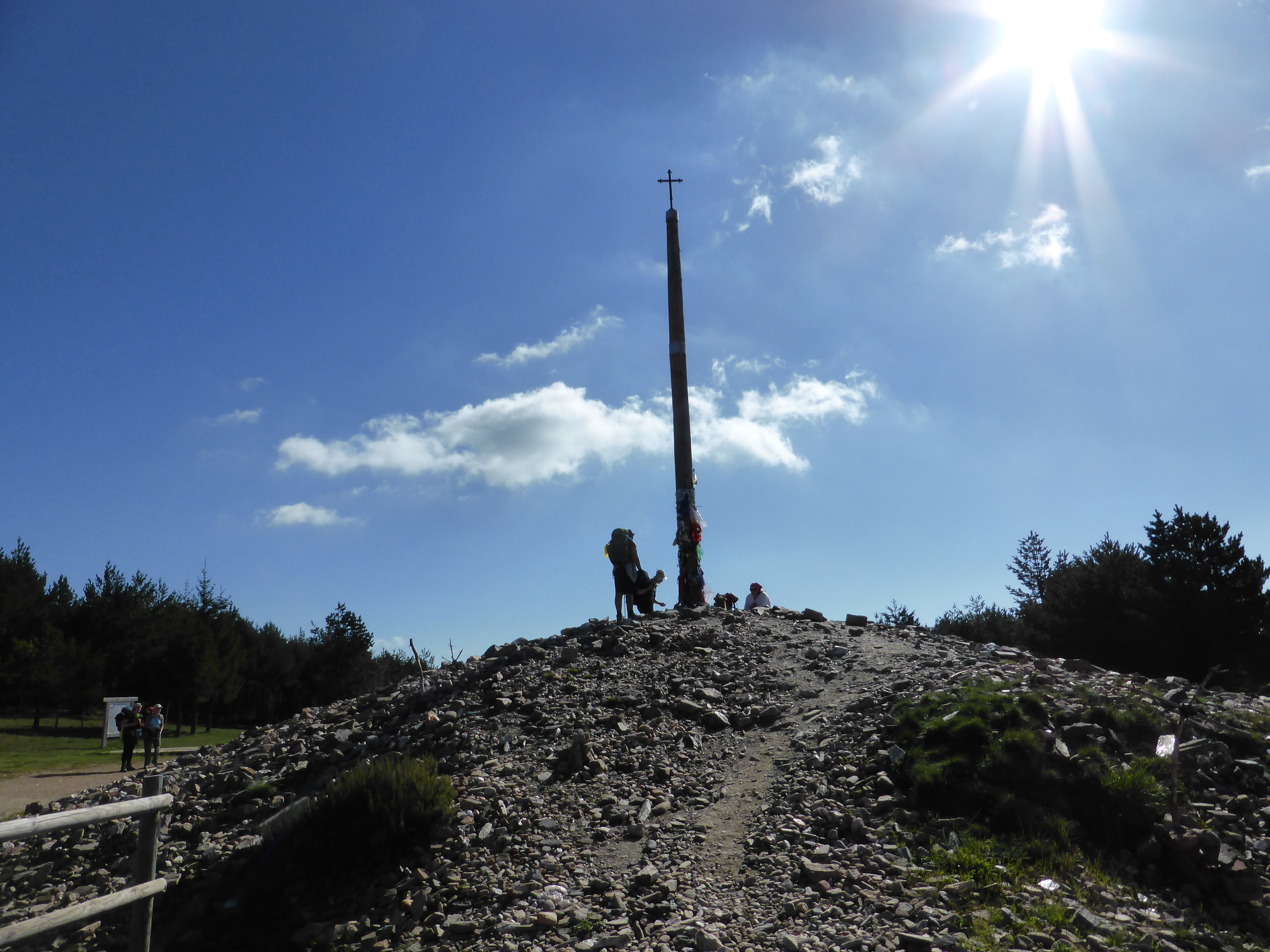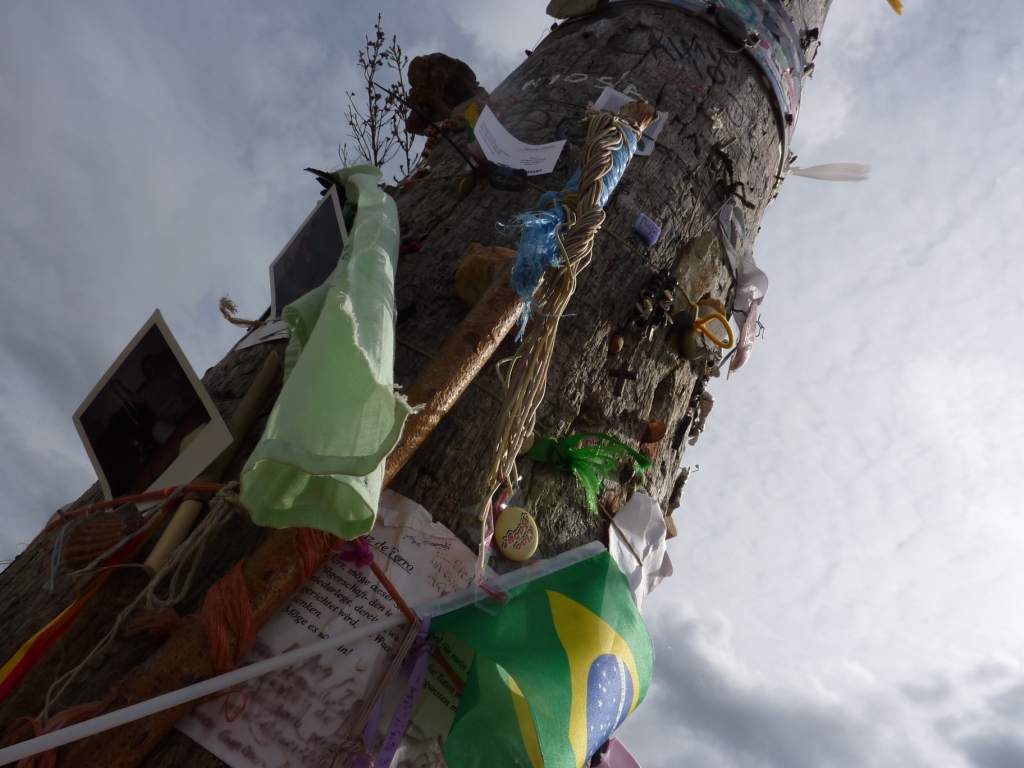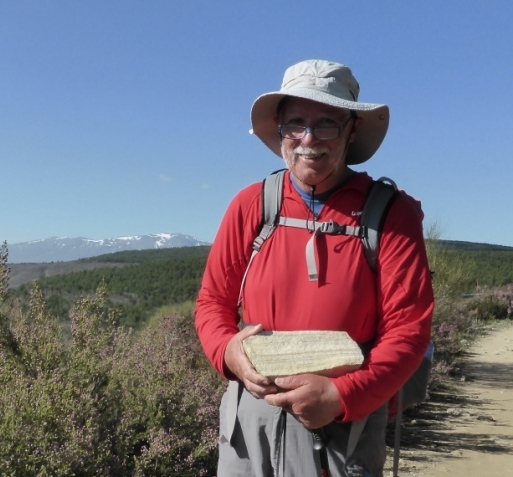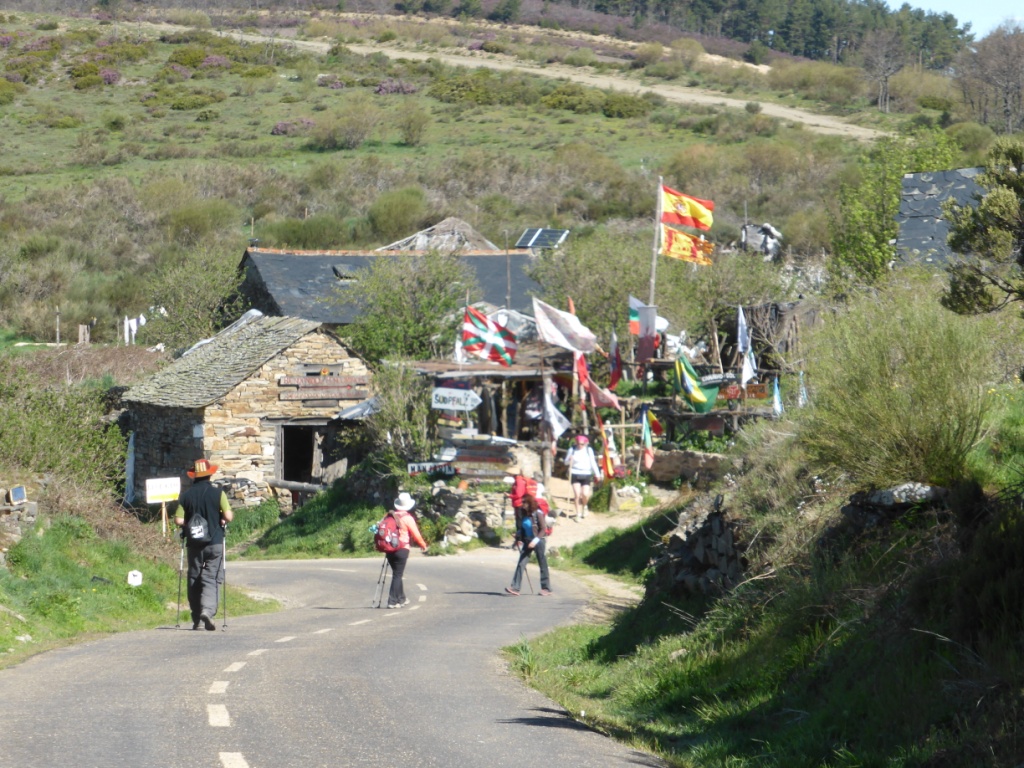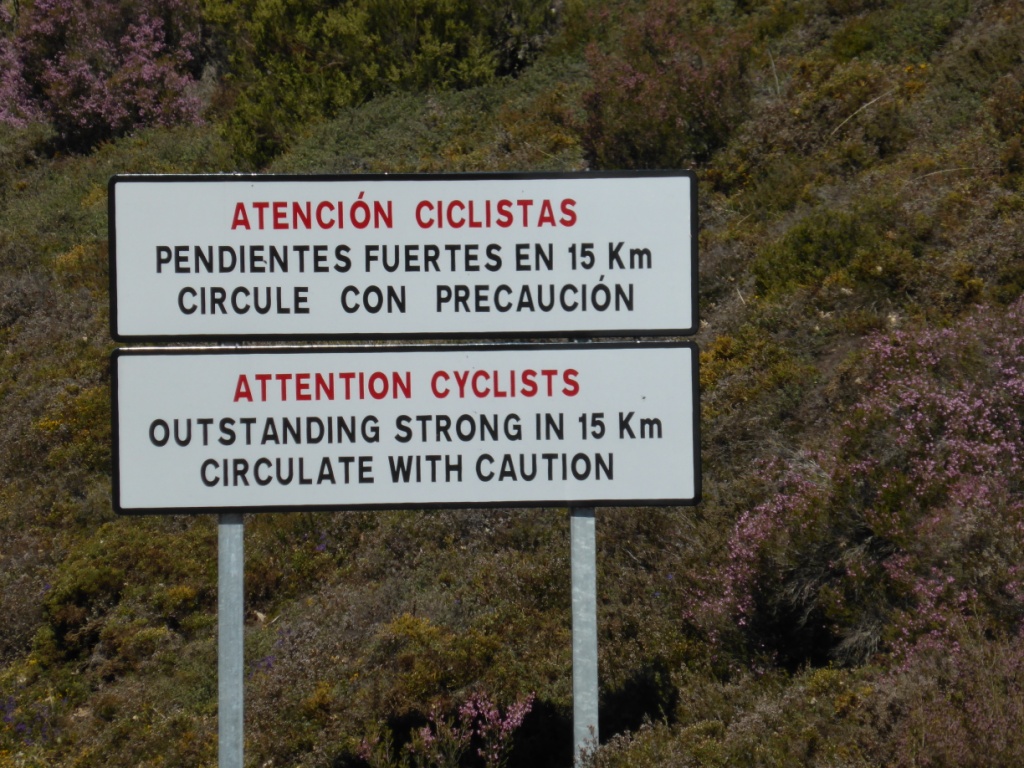When the symbolic does its job and helps us to change.
I begin this first post on the Camino Francés with the stage which passes by the Iron Cross, El Cruz de Heirro. It is a part of the Camino which deeply moves many people. When I arrived on the Camino Francés this year, I joined it in Burgos after walking from Alicante on the Ruta de la Lana. The Ruta de la Lana is very quiet, I did not meet a single other pilgrim and, on some days, nobody at all. The Camino from Burgos was very busy, so I enjoyed my mornings walking with other pilgrims and then, in the afternoons, I walked alone. This is possible since nearly everyone stops for the day at lunch-time. These afternoon hours were silent and felt much less rushed. Most pilgrims walk a lot faster than me and there appears to be a type of collective motorway consciousness about the mornings on this Camino.
[mapsmarker layer=”2″]
When I arrived in Rabanal del Camino, all beds were taken. This little village is a comfortable distance from Astorga and hundreds of pilrims often stay the night there. One of the hostals is run by the Confraternity of St.James, who have several albergues on the Camino. The Confraternity is very English, super-polite and takes its mission to serve pilgrims very seriously indeed. So, in spite of there being no beds, I was offered a balcony to sleep on which delighted me most since I was in the fresh air with the snorer’s incarcerated inside.
The hostal is beside a monastery with sung evening prayers which is a soothing way to end the day sending me off to sleep in the pew. After that I moved on to the balcony for a good night’s sleep in a thunderstorm. I was protected by a roof, yet outside and I felt ready to tackle the ascent to the famous iron cross. The path rises gently in a climb which feels easier than anticipated to Foncebadón (which on Google Earth is under cloud).
On the approach to this little village where many stop for breakfast, the pilgrims, over the years, have stuck sticks in the fence in the form of crosses. What do they think of when they do this? It is a deliberate act and I imagine, for many, there is a prayer, an intention or maybe a hope in the selection of the bits of wood and the weaving into the fence. A little gesture and each gesture a bit different from the others. Collectively, for me, the impression is of unity, collaboration and solidarity. I felt happy to be a part of this common declaration that sticking bits of wood in a fence in the form of a cross is significant: undefined significance. “Undefined but felt” is better and stronger than “defined and understood” in preparing us to change.
There are thousands of these crosses and, the Christian symbolism is underlined its simplicity and lack of commentary. This is a prelude to the Iron Cross where the symbolic act is more defined. Here each pilgrim is invited by tradition to choose a stone, carry it up to the cross and leave it there. Those who arrive in Foncebadón without knowing about the Iron Cross usually learn about it before they leave, since it is a common topic of conversation over refreshments before the climb to the summit.
Many of those who walk the Camino have already decided that they want to make a significant change to their lives, or to learn to live with a loss, to unburden themselves of injustices or violence, or to repent. The Iron Cross can be a very emotional experience and often there are people seated an the pile of stones, facing the cross, in tears.
The cross is posted on top of a wooden pole on which pilgrims have pinned prayers, promises. photos, cigarette packets half-full and other objects of personal significance. Each one of these seems intensely private, made public here and in this manner transformed.
The resolution becomes a vow, the cutting blade of sorrow is blunted and the grief acknowledged begins to emerge into a brighter world: we share our humanity, our weaknesses before this unsophisticated pole with a little cross on top and we gain strength in our unity. In reality we are one body, one spirit. we pray, we cry, we leave something behind as individuals and we pick up our rucksacks and walk on together. We change.
For some reason I chose a large stone this year. I liked its markings of pencil-thin coloured lines. The condemnation of the Pharisees, making public their penances and prayers was on my mind as I approached the cross with the hefty rock but I needed a big enough stone for my purpose and I still expect it was far too small. Nothing of this matters, though, since the objects we choose as symbols work by linking realities within our psyche with the external world, making visible all those inner turmoils, conflicts, losses, frustrations, angers and obsessions, addictions and every variety of wounds which take possession of us and torment us.
So I put my boulder on the pile with all the other smaller stones. The pilgrims walk on for a while in silence. This solemnity is broken within a few kilometres when Manjarín comes into view. Another place where symbols abound, although to me it seems more like a scrap-yard for decommissioned relics. This abondoned village has been rescued by Tomás and his small retinue. These are Templars who follow the code and rite of the Ancient Order of Templars, dedicated to protecting pilgrims on the Camino. Their reception, on the road-side gives little hint of any coherent ethos, being a mixture of new-age, hippy, traditional Catholic, Templar and eccentric. They ring a bell whenever a group of pilgrims approaches welcoming them and inviting them to a coffee or tea in a very run-down hut. I had the privilege to stay overnight in this community on my first Camino. I relished its unique atmosphere, communality and strange rules. The facilities now are very basic; I am assured that they have much improved in the last few years. I hear that there is now a toilet. (The Pharisee in me again! My own piece of land in Spain to which I welcome visitors is without a toilet to this day).
After Majarín, and for those who have engaged with the spirit of the Camino the work of the symbolic begins and that is often the hardest. But the road from now on is downhill and our eyes can look up from introspection to mountain views, wide horizons and the purple and yellow bushes growing over the trail. Everything becomes clear……..almost……..

